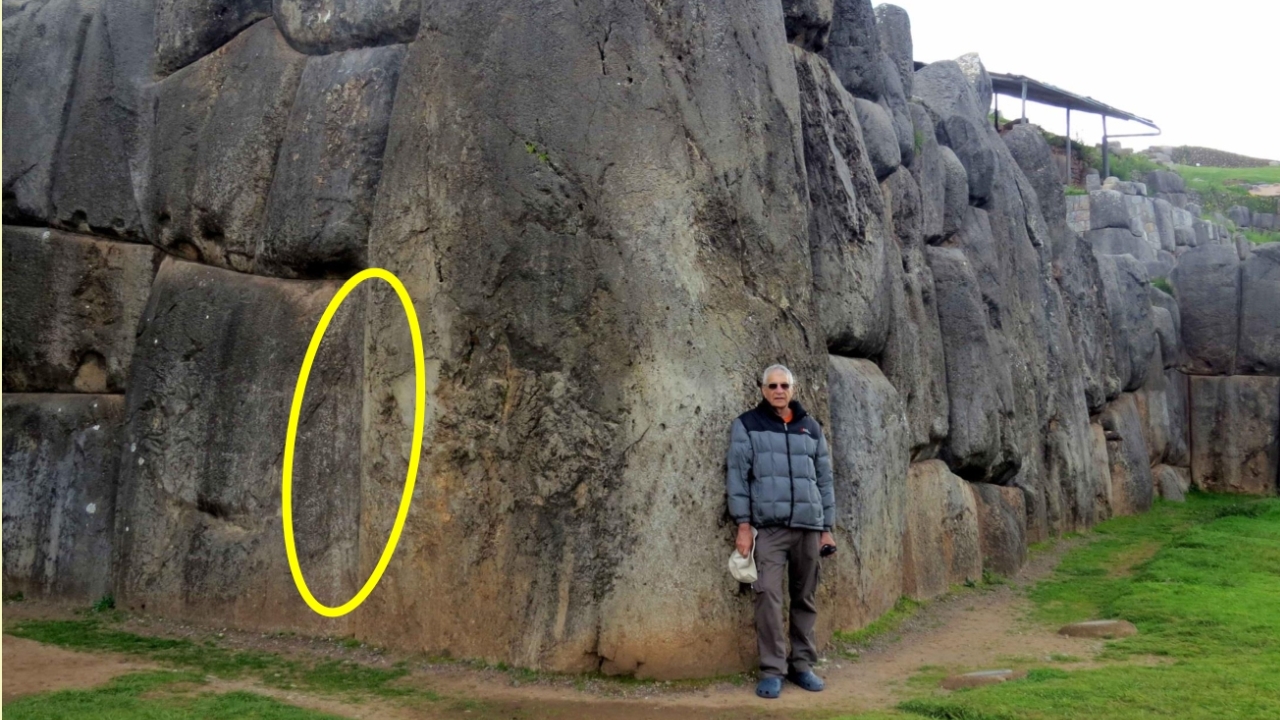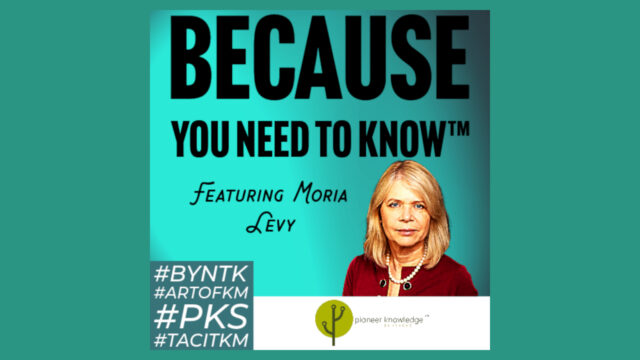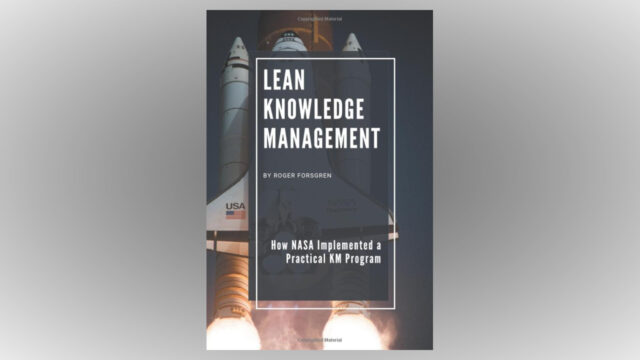
A yardstick for critical knowledge for business resilience
Ancient great deeds have become a mystery. For example, the huge rocks in the fortress wall near Cusco (above) are attached more tightly than current builders can attach small bricks. Similarly, ignorance due to lost organizational knowledge can cause decreased performance or even inability to overcome disasters.
All organizational processes require knowledge to run properly. Loss or lack of knowledge (corporate amnesia) can cause an inability to perform processes that are critical to organizational performance. Business continuity planning should include the identification of the critical knowledge and the measures that should be taken to ensure its retention. Business resilience includes planning for post-crisis prosperity.
Corporate memory and types of knowledge
The operation of any organization is based on various types of knowledge. The organizational knowledge is being acquired, created, and used throughout the organization’s lifetime.
The basic knowledge types are declarative (know what) and procedural (know-how) which is the practical knowledge that provides the basis for action. Procedural knowledge is skills-based knowledge, such as driving or using a computer. A different distinction between types of knowledge is where the knowledge resides. Tacit knowledge is what people have between their ears, while explicit knowledge is articulated knowledge that resides in some types of documentation, either on paper or in various electronic formats. The collection of all knowledge types constitutes the corporate memory
All human activities start in the brain. The brain “knows” what to do, when to do it, and how to do it, and the “knowing” is based on the data stored inside it. Corporate memory serves the same function as the brain of living organisms. Amnesia in people refers to the loss of memories, such as facts, information, and experiences which can be the reason for the loss of ability to perform even simple tasks. The term ‘corporate amnesia’ has been coined by Arnold Kransdorf, who explained it in detail1:
At the rate it is being forgotten and/or is walking out of the front door, many institutions are forfeiting their individual know-how faster than their ability to retain it. The disappearing OM (organizational memory) that has to be re-learned repeatedly, includes all the routines and processes (formal or otherwise) that make an organization tick. Typical examples are the individual’s understanding and accommodation of their employer’s corporate culture, management, communications and decision-making style, contacts and relationships between employees or teams of employees, the details of job-related events and of the knowledge of tried and tested usage as it applies to the organization’s specific market circumstances and special environment. The nature of OM is predominantly non-explicit, otherwise categorized as tacit knowledge or the “how” of know-how.
What is critical knowledge?
Any organizational process, directly business-related or not, requires specific know-how. Without this specific knowledge, the organization cannot perform the process properly, or at all. Such specific knowledge can sometimes be regarded as critical. How can we tell critical knowledge from non-critical?
Critical can be defined as indispensable, vital2, essential3 – for example, “component critical to the operation of a machine” or “Cocoa butter is a critical ingredient in chocolate.” Another meaning4 is “being in or approaching a state of crisis (critical shortage, critical situation).”
Critical knowledge can be similarly defined.
Nick Milton contends5 that the type of knowledge that may emerge as critical is usually procedural (know-how) – knowledge of how to do something (like riding a bicycle).
Mercy Harper regards6 critical knowledge as “the oil in the engine of the business that ensures that everything runs smoothly and reliably.” Following Kransdorf, she regards critical knowledge as tacit knowledge only and defines it as “knowledge that is valuable and durable enough to offer a sustainable, competitive advantage that justifies the cost of retaining it and transferring it from employee to employee … Critical knowledge is often difficult or impossible to replace through hiring. It’s the kind of knowledge that’s gained through on-the-ground, real-life experience inside an organization.”
NASA’s Chief Knowledge Office defines7 critical knowledge as “broadly applicable knowledge that enables mission success, stimulates critical thinking and helps raise questions that need to be addressed at various phases in a project life-cycle.”
The International Atomic Energy Agency (IAEA) describes8 the risks to nuclear facilities from retirement of experts that take with them a substantial amount of knowledge and corporate memory. They define critical knowledge as knowledge that its loss “poses a clear internal threat to the safe and reliable operation of nuclear facilities.”
Stephen J. Hall and Clifford De Raffaele argue9 that corporate amnesia is especially dangerous to small and micro businesses since it “persistently threatened the livelihood of business organizations and their success in commercial activity.”
Siyuan Huang and Jonathon N. Cummings define10 critical knowledge as “the most influential information, know-how, or feedback that contributes directly to task outcomes.”
The criterion for knowledge criticality
The basic definition above serves as the basis for determining knowledge criticality.
The need for knowledge can be discussed for two time-frames: tactical and strategic. Strategic knowledge is essential for future operation or even future survival but is not required to be handy on the spot and is therefore regarded as essential, important, vital – but not critical. Tactical knowledge, which means the knowledge required to solve current problems or to provide the basis for continuous operation of the organizational processes, can become11 a “component critical to the operation of a machine.” The outcome of the lack of specific knowledge coupled with the urgency for its acquisition is the yardstick that distinguishes critical knowledge from important knowledge.
Examples abound of where loss of critical knowledge (corporate amnesia) caused inability to perform and/or a crisis.
Geof Petch reports12 that NASA lost the knowledge of how to put a man on the moon. “Reduced to microfiche, millions of pages of plans, specifications, reports, notes, correspondence, and test results-boxed and shelved according to no plan whatsoever”. Even worse, “someone threw away a set of blueprints for the Saturn booster, the only rocket with enough thrust to send a manned lunar payload on its way.” This stored but non-retrievable knowledge was needed to re-build the Saturn V engine, but its loss required a huge effort of re-invention. This is a typical example of loss of access to critical documents that exist in the organization but are impossible to retrieve for various reasons: permanent deletion or destruction, improper listing, bad format, or hardware issues. The critical knowledge, in this case, was explicit.
NNSA, the US National Nuclear Security Administration, encountered such a crisis13: “Plans to refurbish Trident nuclear weapons had to be put on hold because US scientists forgot how to manufacture a component of the warhead.” The absence of the critical knowledge inflicted severe damages: “$69m in cost over-runs and a schedule delay of at least one year that presented significant logistical challenges for the navy.” The critical knowledge, in this case, was a combination of explicit knowledge and tacit knowledge: “NNSA had lost knowledge of how to manufacture the material because it had kept few records of the process when the material was made in the 1980s, and almost all staff with expertise on production had retired or left the agency.”
Gary P. Pisano and Willy C. Shih present examples14 of knowledge loss through outsourcing: “Decades of outsourcing manufacturing has left U.S. industry without the means to invent the next generation of high-tech products that are key to rebuilding its economy.”
Adi Gaskell reports on research15 describing instances in which quality declines due to knowledge leakage caused by absence of key personnel. This is an example of loss of important knowledge since the production still continued.
On the other hand, Aisin is an example of where critical knowledge helped to avert a crisis16. A fire caused the shutdown of Aisin Seiki, one of Toyota’s most trusted suppliers. Aisin was the sole source for a small but crucial brake-related part used in all Toyota vehicles. “Because of Toyota’s and Aisin’s dedication to the principles of just-in-time (JIT) production, only two or three days’ worth of stock was on hand. The disaster was averted, and assembly plants were reopened after only two days of shutdown due to the availability of the full set of blueprints and assembly instructions.”
Knowledge risk-based techniques to mitigate corporate amnesia
Methods of coping with attrition-related corporate amnesia are discussed by many authors (Cosack, Guthridge & Lawson17; DeLong & Storey18; Kosilov, Mazour & Yanev19; Kransdorf20; Liebowitz21). All of them use a similar formula to calculate a numerical measure of the risk from loss of various corporate knowledge issues and, prioritize the issue to solve. The simple formula is:
Knowledge risk = knowledge criticality X expected time for its disappearance
Both knowledge criticality and the expected disappearance time are given numerical values on some scale and the preservation is performed for the highest knowledge risk values. The scale for the knowledge criticality is determined by the relative importance of the knowledge. The knowledge loss time is the probability for a key person holding the specific knowledge to leave the organization.
The type of knowledge in the formula is tacit since the problem that these papers deal with is workers’ attrition, as Coogan notes22: “Approximately 10% of what a corporation knows resides in corporate repositories … the rest walks out the door every day.”
The logistics unit at Rafael Advanced Defense Systems Ltd. that services many instruments for many clients at various locations uses an additional parameter23 for knowledge criticality – the relative importance of an instrument for a specific customer.
Critical knowledge and business continuity planning
Businesses are prone to a host of disasters that vary in degree from minor to catastrophic and business continuity planning (BCP) is an important part of any business. Business continuity is defined by the International Standards Organization (ISO 22301:201924) as “the capability of the organization to continue delivery of services or products at acceptable predefined levels following disruptive incidents.”
A BCP outlines how a business can continue operating during unplanned threats and disruptions. Bill Kaplan advises25 that “KM-BCP can provide corporations with the tools they need to mitigate and then to recover from the catastrophic loss of their intellectual resources.”
Therefore, knowledge continuity planning should be an inseparable part of any business continuity plan. BIA (business impact analysis), the preparatory part of the BCP, focuses on the determination of critical organizational functions and processes that are critical to maintaining and running the business in the event of an unplanned disruption. An integral part of the BIA is the knowledge risk analysis, i.e., Identification of the knowledge required for these processes to run. This knowledge is the definition of organizational critical knowledge.
The BCP should include the details of the proper measures that must be taken to ensure the existence of critical knowledge and its availability during a disruption. It should be emphasized that the critical knowledge to be considered is both tacit and explicit and the degree of criticality is determined by the damage its absence can inflict.
The relevance of the critical knowledge is time-dependent due to constant changes in the business processes, environment, clientele, or other external variables. The organizational resources are always limited so business continuity plans should focus on maintaining only the critical knowledge, not everything. The critical knowledge should be regularly updated to prevent investing in the preservation of outdated obsolete know-how.
ISO 22316:2017 defines26 organizational resilience as: “The ability of an organization to absorb and adapt in a changing environment to enable it to deliver its objectives and to survive and prosper.” Strategic knowledge that was previously categorized as important should be re-examined in case it had has become critical to provide the basis for future prosperity.
In addition to preservation of the critical knowledge, the continuity plan should include the IT infrastructure (file & object storage, communication channels and relevant software) required to safely store the explicit knowledge and make both explicit and tacit knowledge available and accessible to the right people at the right time and in the right place. The necessary IT infrastructure includes preservation and accessibility to the explicit knowledge and communication channels that enable sharing of tacit knowledge.
Corporate amnesia can cause severe performance problems. It is essential therefore to include knowledge audit in any BCP. The criterion for knowledge criticality is its risk factor – what cannot be done if this knowledge is not available.
Acknowledgements: I thank Stephanie Barnes and Dani Koltun for many helpful suggestions.
Header image: Author Eli Miron at the fortress wall near Cusco, ©Eli Miron, all rights reserved.
References:
- Kransdorf, A. (1998). Corporate amnesia. European Business Review, 98(6). ↩
- Merriam-Webster Dictionary. ↩
- Collins English Dictionary. ↩
- Merriam-Webster Dictionary. ↩
- Milton, N. (2019, September 16). The 3 different types of knowledge, and how they are managed. Knoco Stories. ↩
- Harper, M. (2020, October 14). What is Critical Knowledge? APQC Blog. ↩
- CKO News Staff (2016, September 20). Towards a Critical Knowledge Index. NASA Knowledge Journal, 2. ↩
- Kosilov, A., Mazour, T., & Yanev, Y. (2006). Risk management of knowledge loss in nuclear industry organizations. International Atomic Energy Agency. ↩
- Hall, S. J., & De Raffaele, C. (2013, September). Corporate amnesia in the micro business environment. In 2013 Federated Conference on Computer Science and Information Systems (pp. 1247-1251). IEEE. ↩
- Huang, S., & Cummings, J. N. (2011). When critical knowledge is most critical: Centralization in knowledge-intensive teams. Small Group Research, 42(6), 669-699. ↩
- Merriam-Webster Dictionary. ↩
- Petch, G. (1998, October). The cost of lost knowledge. Knowledge Management Magazine. ↩
- How the US forgot how to make Trident missiles. (2009, March 7). The Herald. ↩
- Pisano, G. P., & Shih, W. C. (2009). Restoring American Competitiveness. Harvard Business Review, 87(7/8), 114-125. ↩
- Agrawal, A., & Muthulingam, S. (2015). Does organizational forgetting affect vendor quality performance? An empirical investigation. Manufacturing & Service Operations Management, 17(3), 350-367. ↩
- Nishiguchi, T., & Beaudet, A. (1998). The Toyota group and the Aisin fire. Sloan management review, 40(1), 49-60. ↩
- Cosack, S., Guthridge, M., & Lawson, E. (2010). Retaining key employees in times of change. McKinsey Quarterly, 3(1), 135-139. ↩
- DeLong, D. W., & Storey, J. (2004). Lost knowledge: Confronting the threat of an aging workforce. Oxford University Press. ↩
- Kosilov, A., Mazour, T., & Yanev, Y. (2006). Risk management of knowledge loss in nuclear industry organizations. International Atomic Energy Agency. ↩
- Kransdorf, A. (1998). Corporate amnesia. European Business Review, 98(6). ↩
- Liebowitz, J. (2008). Knowledge retention: strategies and solutions. CRC Press. ↩
- Coogan, J. (2008, April 15). Boeing Knowledge Management. ↩
- Shine M. (2016). Customer-oriented knowledge preservation. In 21st International Conference of the Israeli Society for Quality. ↩
- International Organization for Standardization. (2019). Security and resilience – Business continuity management systems – Requirements (ISO Standard No. 22301:2019). ↩
- Personal communication, 2022. ↩
- International Organization for Standardization. (2017). Security and resilience – Organizational resilience – Principles and attributes (ISO Standard No. 22316:2017). ↩






